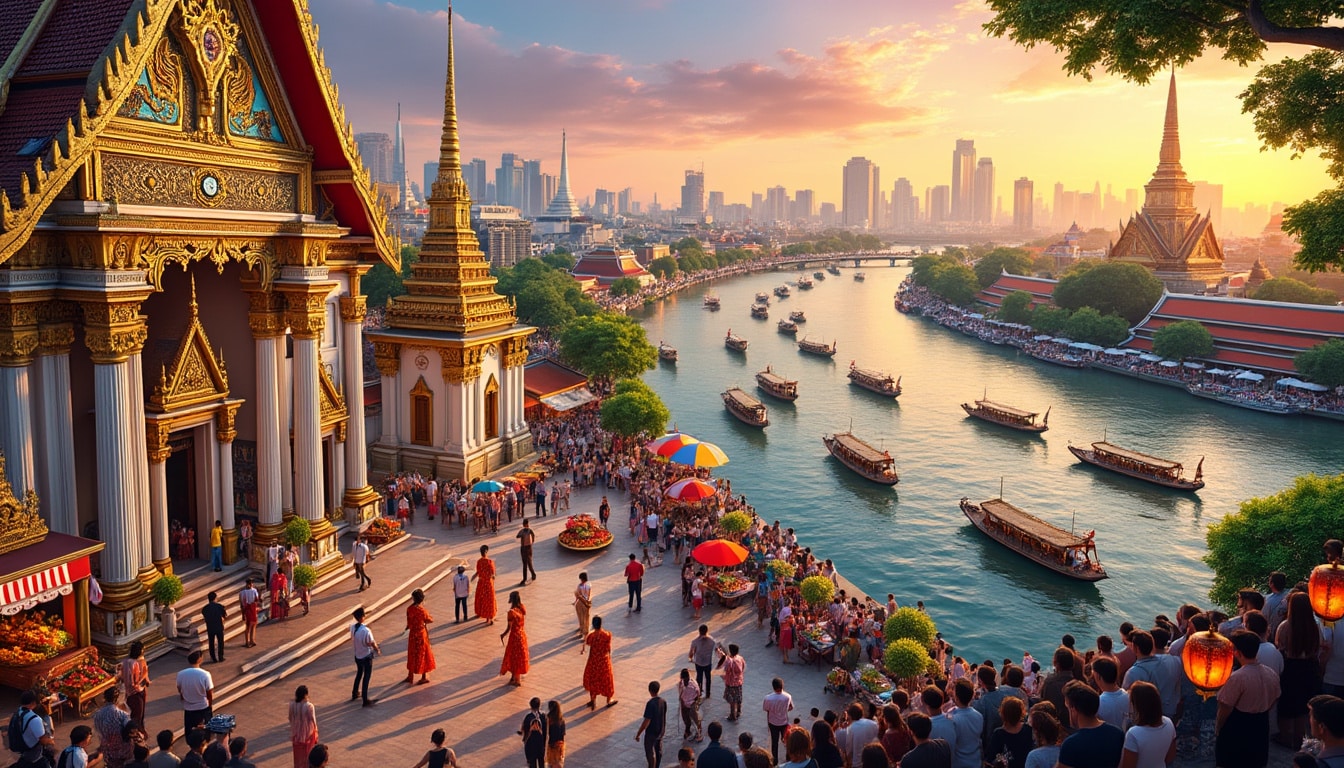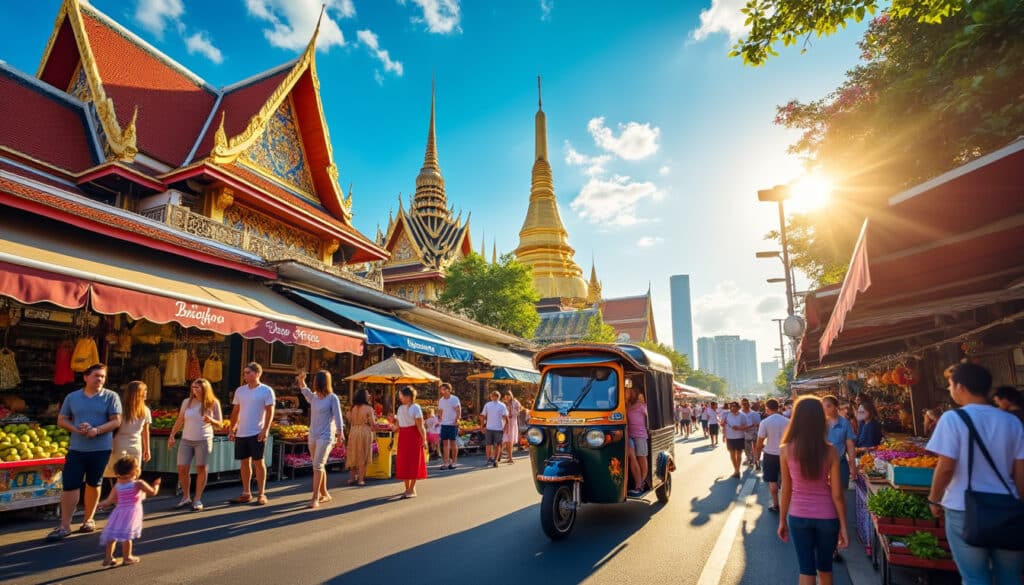Welcome to the bustling heart of Thailand, where history meets modernity in a vibrant tapestry of culture, tradition, and innovation. Bangkok, known for its iconic landmarks and rich cultural heritage, is more than just a gateway to paradise—it is a city that tells the story of an unyielding spirit and an ever-evolving legacy. From its beginnings as a small trading post during the Ayutthaya Kingdom to becoming Southeast Asia’s thriving ‘City of Angels,’ Bangkok’s history is a testament to its strategic significance and resilience. As you journey through its streets, you’ll uncover tales of ancient sieges, royal transformations, and modern revolutions, all of which have shaped the city we know today. Ready to dive into the chronicles of Bangkok? Let’s explore the chapters of its remarkable past.
The Early Beginnings and Strategic Importance
The story of Bangkok begins in the 15th century, a period when the city was merely a small trading post located near the mouth of the Chao Phraya River. This area, then known as Bang Makok, served as a crucial customs outpost during the rule of the Ayutthaya Kingdom. But why was this spot so important? Strategically positioned, it was a logistical gem for trading ships en route to Ayutthaya, facilitating the exchange of goods and wealth. Its significance only grew as it became a vital site for taxation and military logistics.
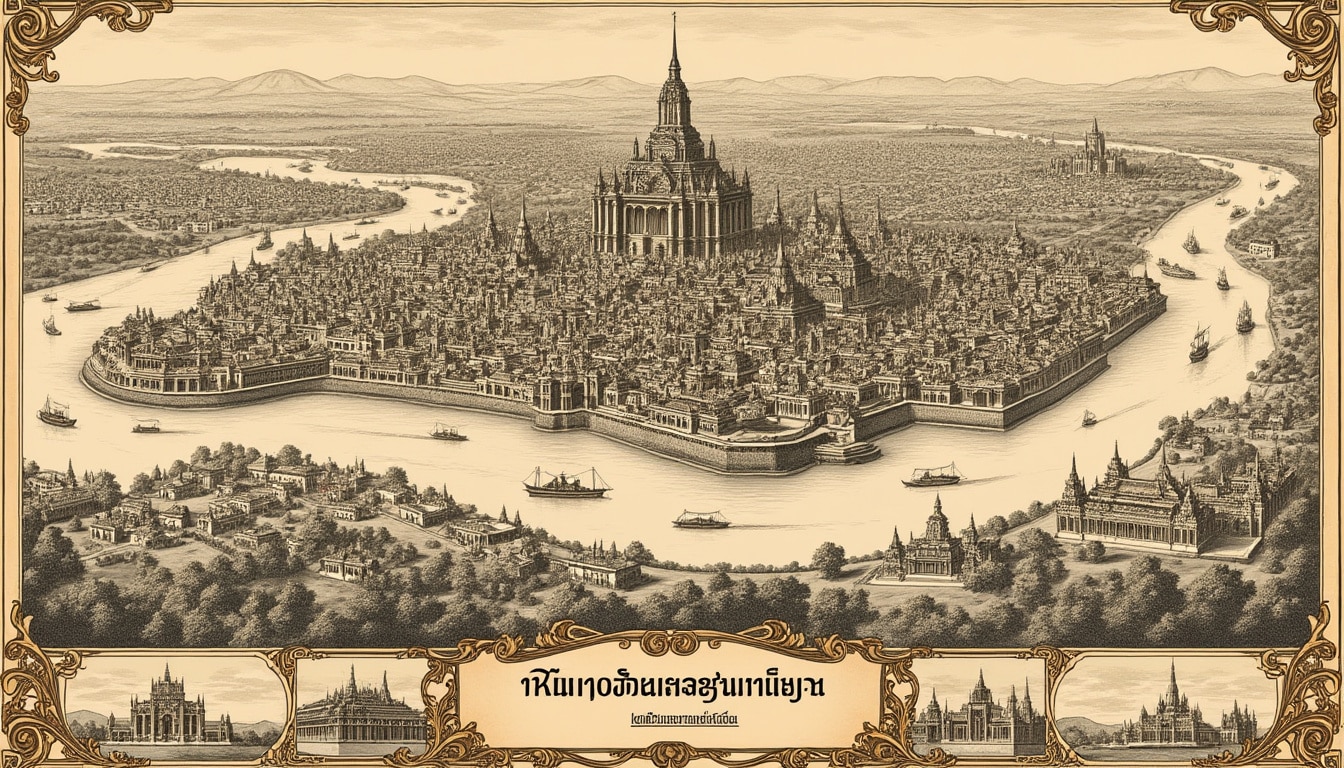
As maritime trade flourished, Bangkok’s role extended beyond commerce. Western influence was palpable in the 17th century, with a Western-style fort designed by a French military architect that housed Portuguese, French, and Siamese soldiers. During this era, the city faced one of its most significant challenges: the Siege of Bangkok in 1688. This event marked the French expulsion during the Siamese Revolution, a pivotal moment where Phra Phetracha overthrew the pro-Western King Narai.
Despite such upheavals, Bangkok’s strategic importance as a trading hub remained steadfast. Its role in Asian trade—particularly in Sino-Siamese-Japanese exchanges—cemented its status. This laid the groundwork for the city’s further development, leading to the eventual establishment of a new capital after Ayutthaya fell to the Burmese in 1767. The importance of Bangkok as a strategic site cannot be overstated. Its position was not only geographical but also political, serving as a neutral zone between the French and British colonial empires.
In exploring Bangkok’s early history, it is essential to understand its role as a center of political and economic maneuvering. A city that witnessed dramatic transformations, laying the foundation for its rise as Thailand’s capital and a megacity at the heart of Southeast Asia. Its early strategic significance foretold the city’s destiny as a crossroads of culture and commerce, paving the way for future growth and prominence on both a regional and global scale.
Key Developments & Milestones
- 🚢 15th Century: Bangkok’s early role as a small trading post and customs outpost.
- ⚔️ 1688: Siege of Bangkok and the expulsion of French forces during the Siamese Revolution.
- 🌏 Strategic position as a neutral zone amid French and British colonial empires.
- 💼 Development of Bangkok as a key hub for Sino-Siamese-Japanese trade.
The evolving identity of Bangkok as it transitioned from a strategic village to a significant trading post underlines the dynamic nature of this city’s history. Moving forward, we’ll explore how this foundation laid the cornerstones for the growth of Bangkok as the capital under the rule of King Rama I.
The Establishment of Rattanakosin – A New Capital
With the fall of Ayutthaya to the Burmese in 1767, the need for a new capital became imperative. This led to the rise of Thonburi, established by King Taksin across the Chao Phraya River. However, it was the decisive actions of King Rama I that truly reshaped the destiny of Bangkok. In 1782, upon ascending to the throne, King Rama I moved the capital to the eastern bank of the river, marking the dawn of the Rattanakosin era.
The establishment of Rattanakosin wasn’t just a shift in geography; it was a cultural and architectural renaissance. Central to this transformation was the construction of the Grand Palace and the Temple of the Emerald Buddha. These landmarks signified not only royal authority but also the cultural revival that characterized the early Chakri Dynasty. The new capital, named Krung Thep or ‘City of Angels,’ embodied the aspirations of a revitalized Siam.
| Year | Event | Significance |
|---|---|---|
| 1782 | Establishment of Rattanakosin | King Rama I’s establishment of the new capital solidifying Bangkok’s royal significance. |
| 1784 | Building of the Grand Palace | Architectural and cultural development representing the new era. |
| 1785 | Temple of the Emerald Buddha | Spiritual and cultural center of Bangkok. |
In the heart of the new capital was the Grand Palace, an iconic emblem of Siam’s cultural and political identity. More than just a residence for the monarchy, the palace complex was a hub for artistic expression, with architecture that combined traditional Thai motifs with influences from across Asia. The Grand Palace alongside temples like Wat Phra Kaew became a focal point for religion and statecraft, a place where divine rites underscored the divine right of the Chakri Dynasty.
The geopolitical strategy behind the relocation was significant. By moving the capital to the east of the river, King Rama I capitalized on a more defensible position while revitalizing a region with access to maritime trade routes. This decision allowed Bangkok to cement its place not only as the capital of Siam but as a burgeoning center of commerce and culture in Southeast Asia. The establishment of Rattanakosin was indeed the cornerstone upon which modern Bangkok was built.
As we explore the growth and transformation of Bangkok during the Rattanakosin era, it becomes clear that the city’s success was rooted in strategic foresight and cultural renaissance. This set the stage for future development, as Bangkok emerged as a city of immense historical and cultural depth, poised to grow into the modern metropolis it is today.
Next, we will unravel the influence of the 19th-century Western interactions on Bangkok and how the city responded to global changes, steering its course towards modernity and political evolution.
Navigating Industrial and Political Changes in the 19th Century
The 19th century was a transformative period for Bangkok, steering it towards modernization amid external influences and internal revolutions. During King Chulalongkorn’s (Rama V) reign, the city witnessed significant growth resulting from increased interactions between Siam and Western countries. These exchanges brought cultural diversity and economic development but also introduced a new era of political change.
King Chulalongkorn was instrumental in modernizing Bangkok. He introduced public services like rail transportation, and the influence of Western architecture became evident in structures such as the Abhisek Throne Hall and the Vimanmek Teak Mansion. His admiration for European aesthetics can still be seen today in iconic landmarks throughout the city.
Bangkok’s modernization during this era also included agrarian reforms, education advancements, and improved public health initiatives. The introduction of railways facilitated not only movement within the city but also enhanced trade routes, linking Bangkok more effectively with regional and international markets. However, the rapid influx of Western culture brought both opportunities and challenges.
Political changes were just as profound. The late 19th century marked a shift from absolute monarchy towards a more modern governmental structure. While King Chulalongkorn deftly navigated international diplomacy, the early 20th century saw a significant political upheaval with the abolishment of absolute monarchy in 1932. This event was a defining moment, reshaping the government’s structure and signaling Bangkok’s new political era.
Challenges and Triumphs
- 🏛️ Modernization initiatives by King Rama V in transportation and architecture.
- 🔄 Western cultural influence leading to both growth and sociopolitical challenges.
- 💼 1932: Transition from absolute monarchy, starting Supreme political change.
- 📈 Rapid industrial growth prompting urbanization and economic prosperity.
The transformation in Bangkok was not solely physical but deeply cultural and political, marking its transition into a modern city. This era laid the infrastructural and political foundations necessary for Bangkok to thrive in the 20th century, solidifying its place not only as a capital but as *a beacon of modernity* in Asia. With these foundational shifts, Bangkok was poised to navigate the tumultuous waters of the 20th-century global landscape, becoming a city that exemplifies resilience and adaptability.
As we peer into the 20th century, prepare to uncover the city’s responses to World War II, its redevelopment, and how these monumental shifts continue to influence Bangkok’s journey into the modern age.
The Impact of World War II and Post-War Transformation
The entry into the 20th century brought Bangkok to new crossroads, particularly during World War II. As a pivotal moment in history, World War II dramatically reshaped Bangkok’s landscape and global standing. When Thailand signed a military alliance with Japan, Bangkok became a strategic location, experiencing heavy bombings by Allied forces. As a consequence, much of the city was left in ruins, necessitating a comprehensive reconstruction after the war.
The post-war reconstruction era was marked by rapid development and modernization. New infrastructure arose, setting the foundation for future growth. This was a period when the political tapestry of Bangkok transformed, characterized by a series of coups and political unrest. Despite such instability, Bangkok emerged resilient, capitalizing on newfound opportunities for economic growth.
During the Vietnam War era, Bangkok served as a strategic ally to Western powers and became a hub for military and economic activities. This external influence helped modernize the city’s trade and infrastructure. As Southeast Asia began to rise, Bangkok positioned itself as a thriving center for business and commerce, spearheaded by local giants like the *Siam Commercial Bank*, which played a crucial role in the economic development.
Key Developments Post-War
- ⚡ Expansion of infrastructure with new roads and public facilities.
- 💹 Economic boom due to increased foreign investment and regional trade.
- ☮️ Strategic military alliances during and post-Vietnam War enhancing geopolitical importance.
- 🏙️ Urbanization drives, contributing to Bangkok’s growth as a global city.
Still, political upheavals like the 1973 student revolts and the 1976 military coup marked Bangkok’s challenging path to democratic governance. The tensions between authoritarian rule and democratic aspirations often played out vividly in the city’s streets, reflecting a broader national struggle. However, such challenges fostered a stronger sense of unity and determination among Bangkok’s citizens.
As Bangkok navigated these post-war challenges, its cultural and economic revival ensured that the city remained a key player on the international stage. The developments during this time were foundational for the vibrant and dynamic metropolis that modern Bangkok is today, a city that continues to evolve while honoring its rich historical past.
As we transition into more recent times, we will explore the intricate dynamics of modern Bangkok, how it managed to transform into a cosmopolitan powerhouse, and what makes it an exciting global destination today.
Modern Bangkok – The Rise of a Global Metropolis
Bangkok’s ascent into the modern era is characterized by rapid urbanization, economic prosperity, and a cultural melting pot of diverse influences. From the 1980s, the city experienced exponential growth, emerging as Southeast Asia’s prime destination for business, tourism, and culture. The lobbying of multinational corporations choosing Bangkok as their regional headquarters encapsulated its newfound stature.
The construction boom, with glittering skyscrapers overlooking the historic Chao Phraya River, redefined the city’s skyline. Areas like Siam Center became emblematic of Bangkok’s trendsetting allure, showcasing a blend of local culture and modern architecture. The influence of brands like Central Group and Thai Beverage further cemented Bangkok’s place in the global market.
| Aspect | Development | Impact |
|---|---|---|
| Business & Economy | Establishment of Bangkok as a financial hub | Attracted regional headquarters of multinational companies |
| Culture | Revival of traditional arts alongside modern influences | Promoted as a global cultural hotspot |
| Infrastructure | Expansion of public transport, including BTS Skytrain | Improved connectivity and reduced congestion |
Bangkok’s vibrancy extends beyond economic milestones. The city is known for its rich cultural festivities, lively street markets, and exotic street food, making it a must-visit destination for tourists worldwide. From iconic landmarks such as Jim Thompson’s House and the Bangkok National Museum to bustling food hubs, the city offers a palette of experiences for every visitor.
Cultural and Social Dynamics
- 🎨 Blossoming arts scene blending traditional and contemporary styles.
- 🍜 Renowned food markets and global dining experiences (try these famous foods)
- 🌆 Revamped urban lifestyle with both high-end and street shopping experiences.
- ⛩️ Continued significance of Buddhist temples and historical landmarks.
In 2025, Bangkok stands as a testament to resilience, a unique blend of tradition and modernity that continues to draw millions yearly. It is a city where bustling streets meet serene temples, and where the thrill of the new beautifully complements the legacy of the old. Despite the complexities of its history, Bangkok invites everyone to take part in its ever-evolving story.
As we wrap up this journey through Bangkok’s history, it’s evident that the city is more than its past. It’s an evolving landscape inviting everyone to experience its vivacious energy, cultural richness, and promising future.
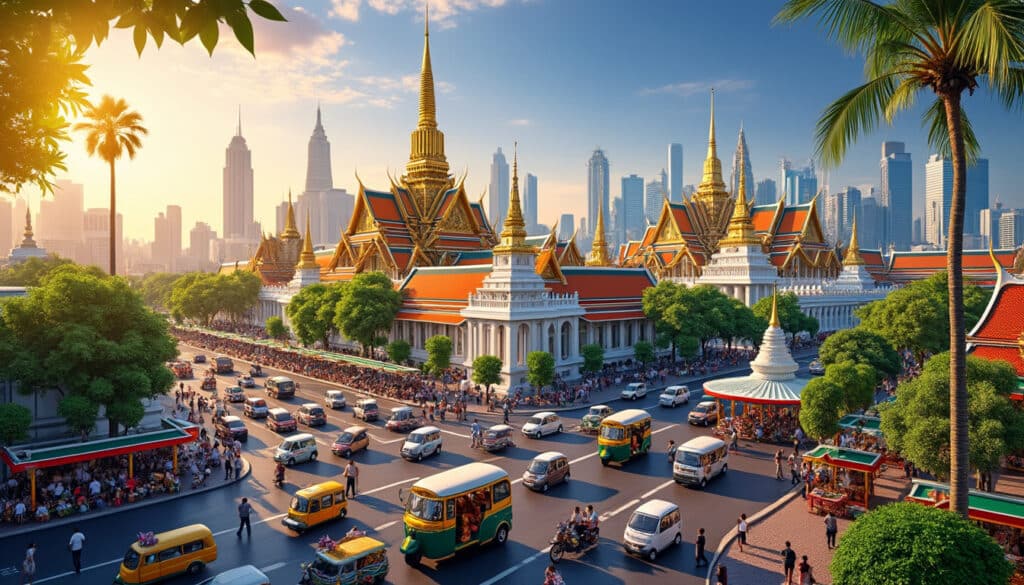
Fun Facts & Curiosities About Bangkok
Bangkok, a vibrant blend of ancient traditions and modern marvels, captivates visitors with its endless energy. As Thailand’s bustling capital, the city offers a fascinating array of contrasts from its traditional temples to towering skyscrapers. It’s no wonder that Bangkok…
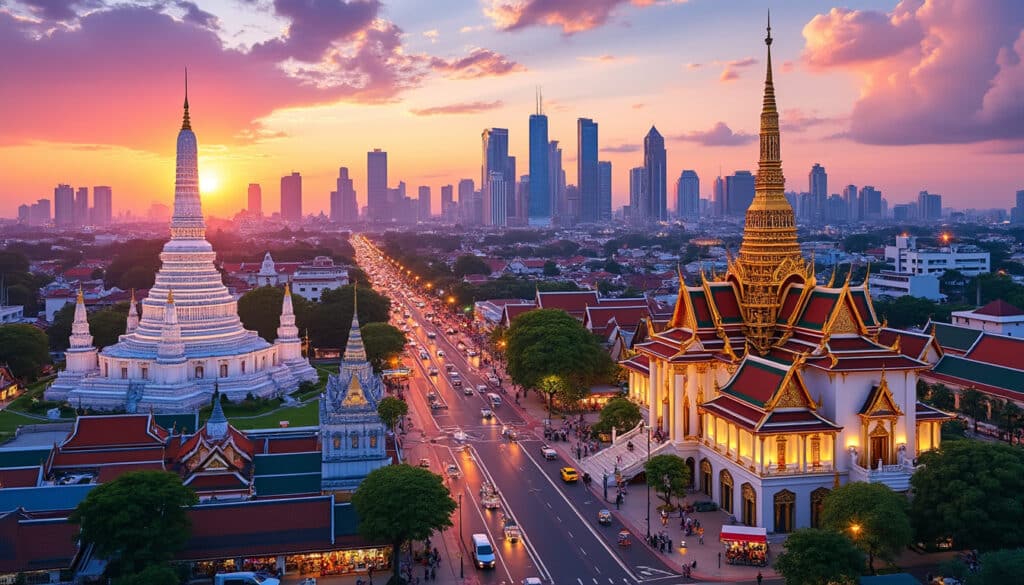
Architecture and urban features of Bangkok
Bangkok, a city that pulsates with life and color, is a mesmerizing tapestry woven with threads of tradition and threads of modernity. The juxtaposition of its ancient temples against sleek skyscrapers reflects its unique architectural identity. As Thailand’s vibrant capital,…
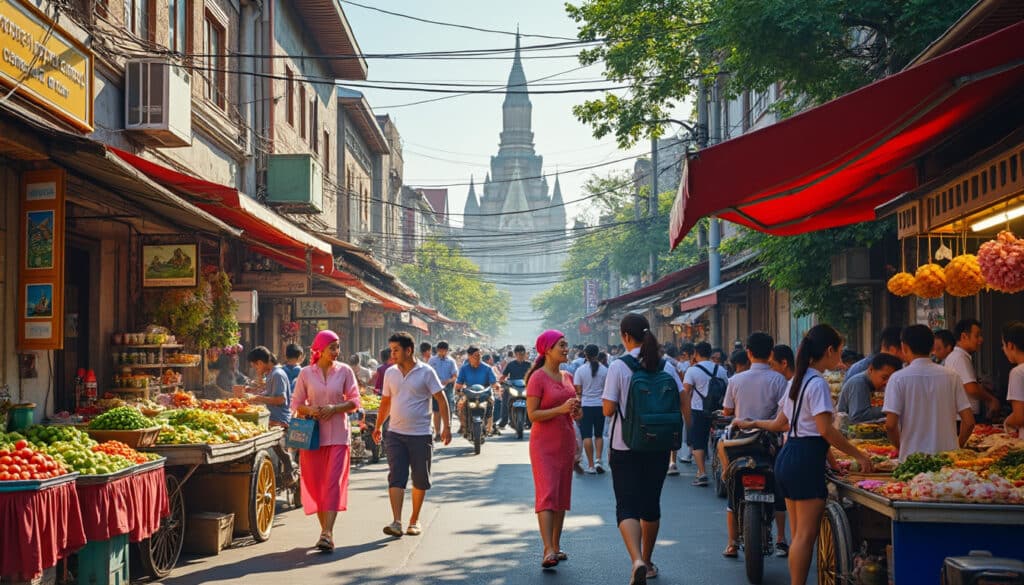
Discover the bustling energy of Bangkok, a city where ancient traditions and modern lifestyles coalesce under the glitz of neon lights and serene temple shadows. As the heart of Thailand, Bangkok pulsates with an unyielding vitality that captivates every visitor.…
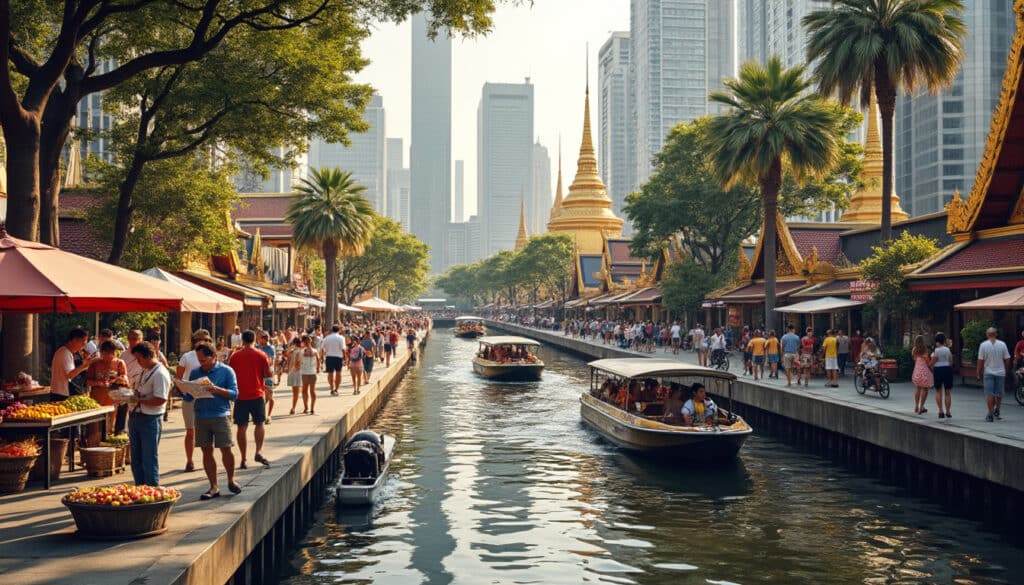
Demographics and geography of Bangkok
Bangkok, a city known for its vibrant street life, timeless culture, and dynamic urban environment, extends beyond just being Thailand’s capital. This bustling metropolis is characterized by its unique demographic composition and geographical footprint, weaving a complex tapestry that encapsulates…
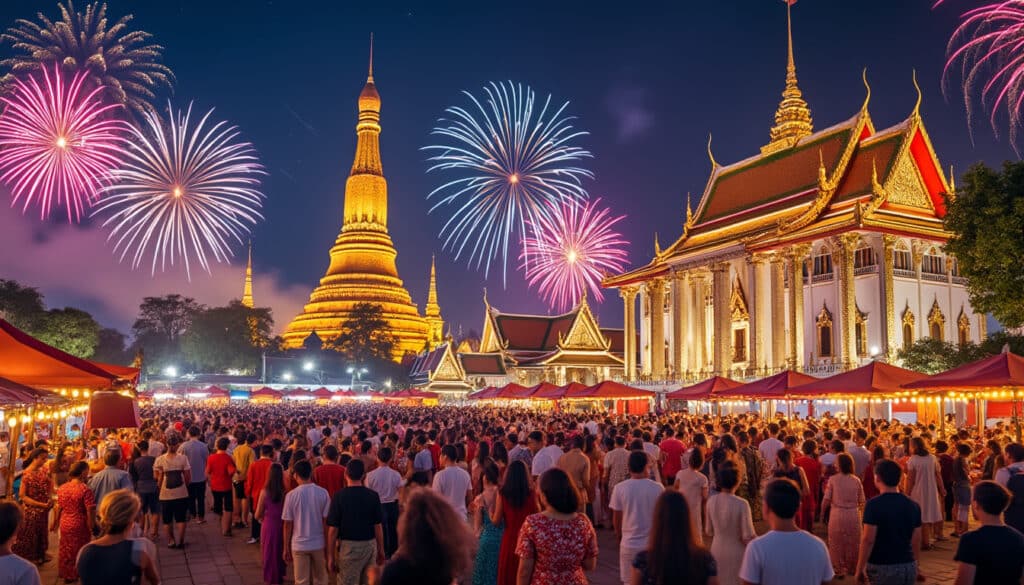
Holidays and celebrations in Bangkok
Bangkok, the vibrant capital of Thailand, is a city that never sleeps and a hub of festivities throughout the year. Whether it’s a traditional Thai festival or an international celebration, Bangkok is the place where locals and tourists come together…
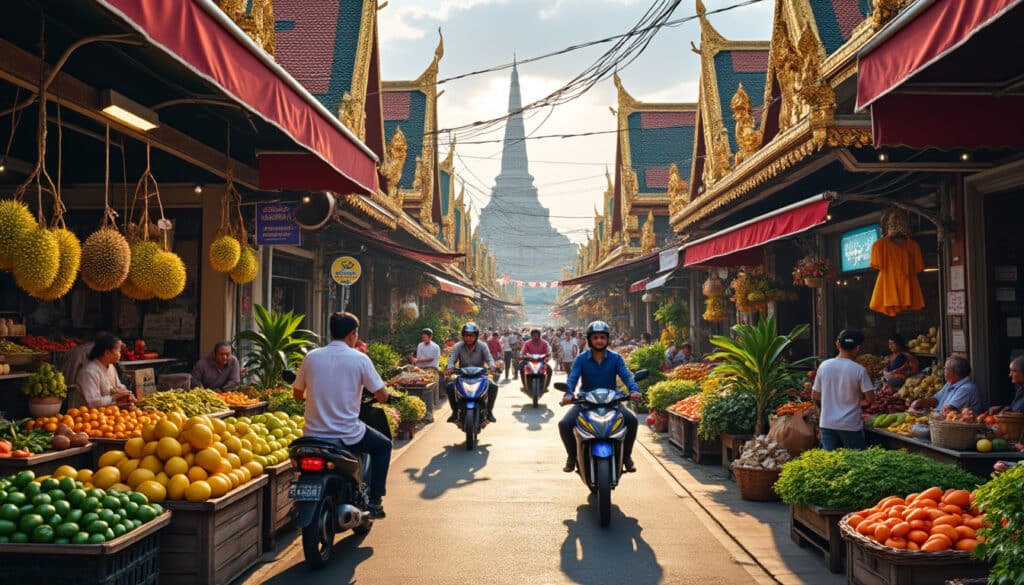
Language and spelling of Bangkok
The enchanting city of Bangkok, Thailand’s vibrant capital, harbors a captivating tapestry of languages. With its rich historical veins and bustling modern-day activities, the languages spoken in Bangkok reflect not only its local heritage but also its position as a…
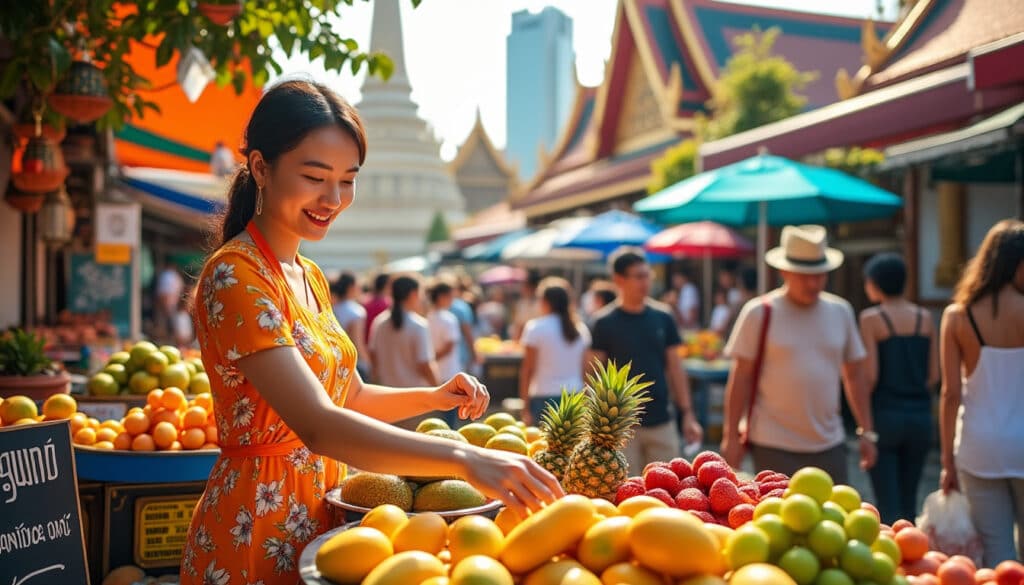
Local tips for tourists in Bangkok
Bangkok is a city rich in history, culture, and vibrant life, making it a must-visit destination for travelers seeking an unforgettable experience. Stepping beyond the well-trodden tourist paths, visitors can uncover hidden gems that offer a deeper understanding of local…
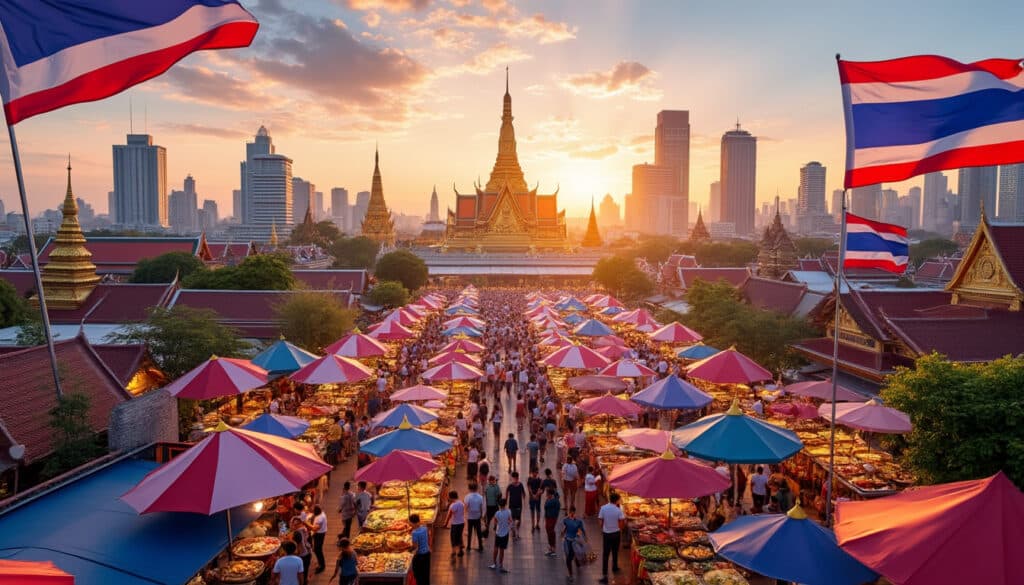
Names, flags, and identity of Bangkok
Bangkok, a city that pulsates with a mix of ancient traditions and modern dynamics, is more than just Thailand’s bustling capital. It’s a city with a rich tapestry of names, identities, and symbols that reflect its history and cultural depth.…
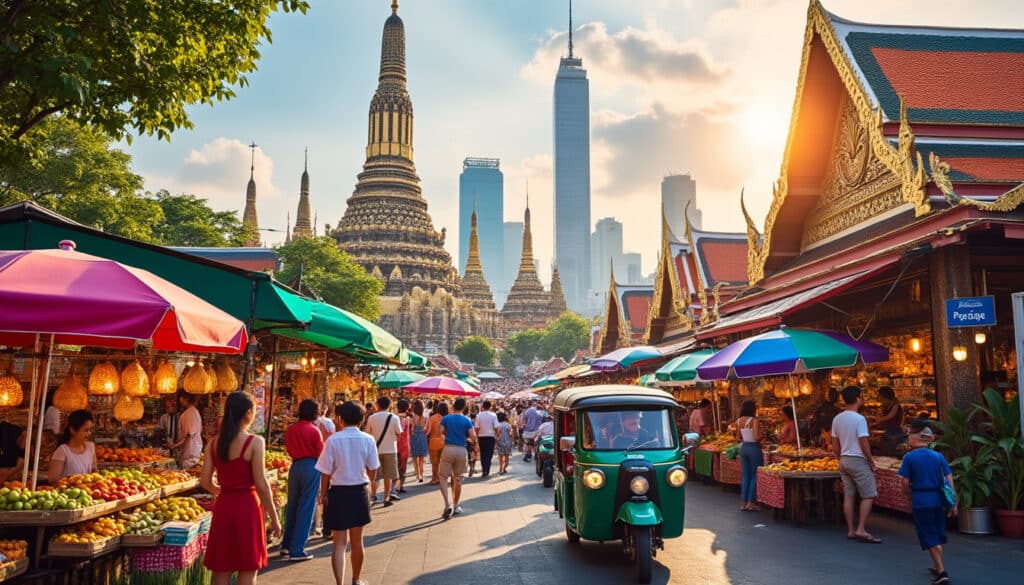
Reputation and identity of Bangkok
Bangkok, a city that pulses with life and energy, captivates the world with its unique blend of tradition and modernity. Its reputation as a vibrant and chaotic metropolis is matched only by its rich cultural heritage and flourishing tourism industry.…
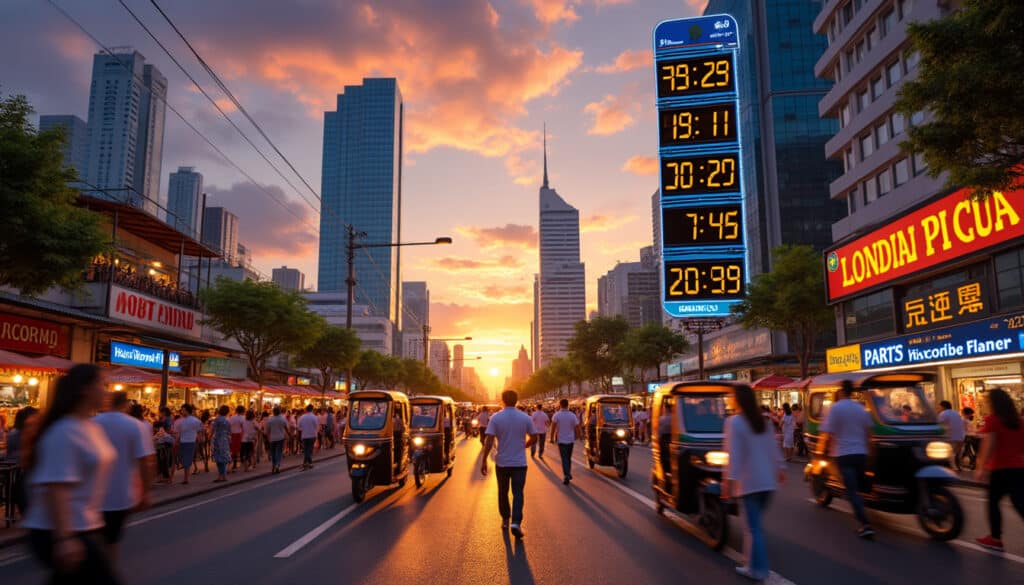
Understanding Bangkok’s time zone is crucial for travelers and residents alike, whether planning a journey or just coordinating with people across the globe. The local time, known as *Bangkok Time*, is part of the GMT+7 zone, highlighting its placement in…
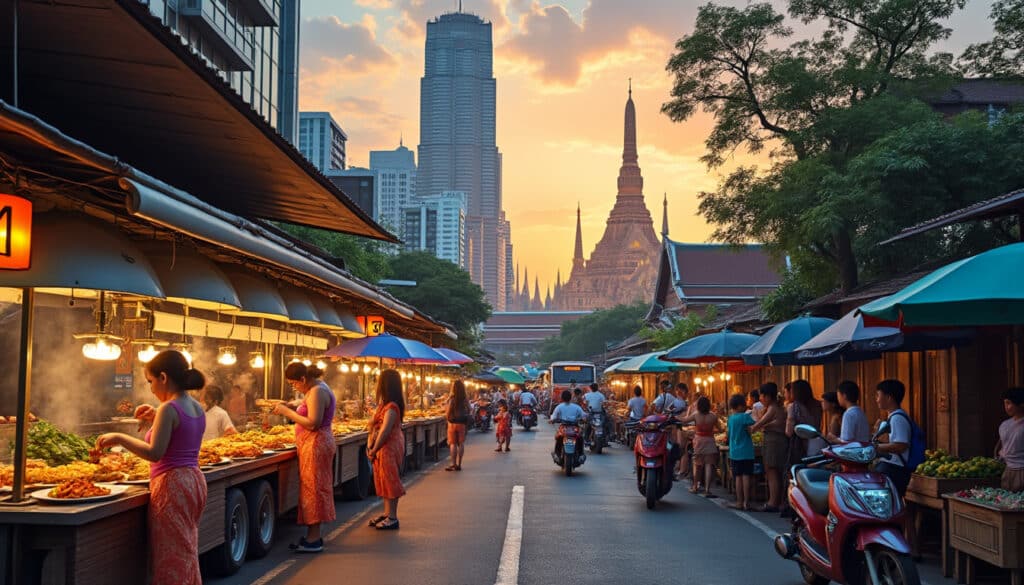
Unusual facts and social issues in Bangkok
Bangkok, known for its vibrant life and cultural richness, is a city of fascinating contrasts. While the shimmering temples and bustling streets capture the attention of travelers, there’s an intriguing side to the Thai capital that many may not immediately…

What does Bangkok look, smell, feel like?
Bangkok, a bustling metropolis at the heart of Thailand, is alive with an intriguing blend of sights, sounds, smells, and experiences that captivate every visitor. Known for its majestic Buddhist temples, vibrant street food scenes, and the ever-chaotic Chao Phraya…

